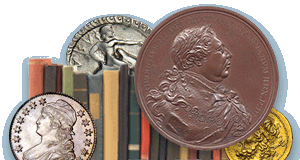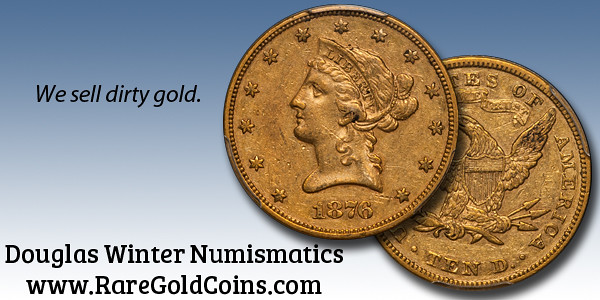
PREV ARTICLE
NEXT ARTICLE
FULL ISSUE
PREV FULL ISSUE
COINS OF THE FOURTH CRUSADEMike Markowitz wrote an article in CoinWeek on the coins of the Fourth Crusade. An excerpt is found below. -Garrett Thanks to generations of intermarriage within a relatively narrow elite, almost everyone in the Byzantine ruling class of the 12th century was related to everyone else. As a result, politics took on the character of fratricide: the war of brother against brother. This was the background against which the catastrophic events of the Fourth Crusade (1202 – 1204) unfolded. We are unusually well-informed about this crusade because written accounts survive from participants on both sides–notably the French knight Geoffroi de Villehardouin (c. 1150 – 1213)[1] and the Byzantine official and chronicler Niketas Choniates (c. 1155 – 1217)[2]. In 1198, Lotario dei Conti di Segni, from a family that produced nine cardinals and four popes, became Pope Innocent III[3]. He proclaimed a Fourth Crusade on August 15 of that year. The purpose of the Crusades was to regain the holy city of Jerusalem from the Muslims, who had captured it in 1187. Preoccupied with their own quarrels, the rulers of Europe were reluctant to campaign in the East, and it took several years to organize an army of Crusaders. It was agreed that the first target would be the powerful Muslim Ayyubid dynasty in Egypt, and the army would assemble at the great maritime city of Venice. On September 12, 1185, the brutal and unpopular Byzantine emperor Andronikos I Komnenos was overthrown by his cousin, the rebel Isaac II Angelos, who killed an imperial officer sent to arrest him. Isaac took refuge in the great cathedral of Hagia Sophia and appealed to the population of Constantinople for support: "…[T]he mob broke into the palace, falling on everything of value that it contained … Andronicus, bound and fettered with a heavy chain around his neck was brought before Isaac for punishment. His right hand was cut off and he was thrown into prison … he was blinded in one eye and brought forth on a scrawny camel to face the fury of his erstwhile subjects (Norwich, 153)." After three days of torture and mutilation, Andronikos died. The "Game of Thrones" in Constantinople was a rough sport. 
Isaac II Angelus. First reign, 1185-1195. Gold Hyperpyron (27mm, 4.38 g, 6h). Constantinople mint. Image: CNG. Byzantine coinage of this era consisted of three main denominations. The gold hyperpyron weighed about 4.4 grams and was 21.5 carats fine (89.58% pure). The silver aspron trachy (usually described as "electrum" because it contained a few percent of gold) had the same weight. Officially, three or four of these traded for one gold hyperpyron. A cup-shaped copper coin with a few percent of silver, confusingly called the trachy, weighed about 3 grams, and 184 of them could be exchanged for a single hyperpyron. The flat copper tetarteron of about 3.5 grams served as small change, with 864 — or more! — exchanging for one gold hyperpyron. Isaac II 
Isaac II Angelus, first reign, 1185-1195. Aspron Trachy (Electrum, 29 mm, 4.41 g, ) Constantinople. Image: Leu Numismatik. "The nobleman whose sudden outburst of unwonted temerity has raised him to the throne was a weak, incompetent young man of thirty, with florid face and red hair, and the vanity of a peacock. The national situation was desperate … the accession of Isaac Angelus to power was little short of disastrous" (Goodacre, 285). 
Isaac II Angelus. First reign, 1185-1195. Billon Trachy (28mm, 3.10 g,). Constantinople mint. Image: CNG/CoinWeek. For 10 years, Isaac II Angelos ruled a disintegrating empire. He defeated a Norman invasion in the Balkans but lost Bulgaria to a revolt provoked by the heavy taxes he imposed on the peasants. Isaac especially revered the Archangel Michael, who figures prominently on his coinage.[4] To finance his extravagant building projects, he debased the coinage – the electrum aspron[5] falling to just 4 carats (16.6% gold) and the billon trachy[6] to just 2% or 3% silver. The humble copper tetarteron bears the facing bust of Archangel Michael on one side and the emperor on the reverse.
To read the complete article, see:
Wayne Homren, Editor The Numismatic Bibliomania Society is a non-profit organization promoting numismatic literature. See our web site at coinbooks.org. To submit items for publication in The E-Sylum, write to the Editor at this address: whomren@gmail.com To subscribe go to: Subscribe All Rights Reserved. NBS Home Page Contact the NBS webmaster 
|

